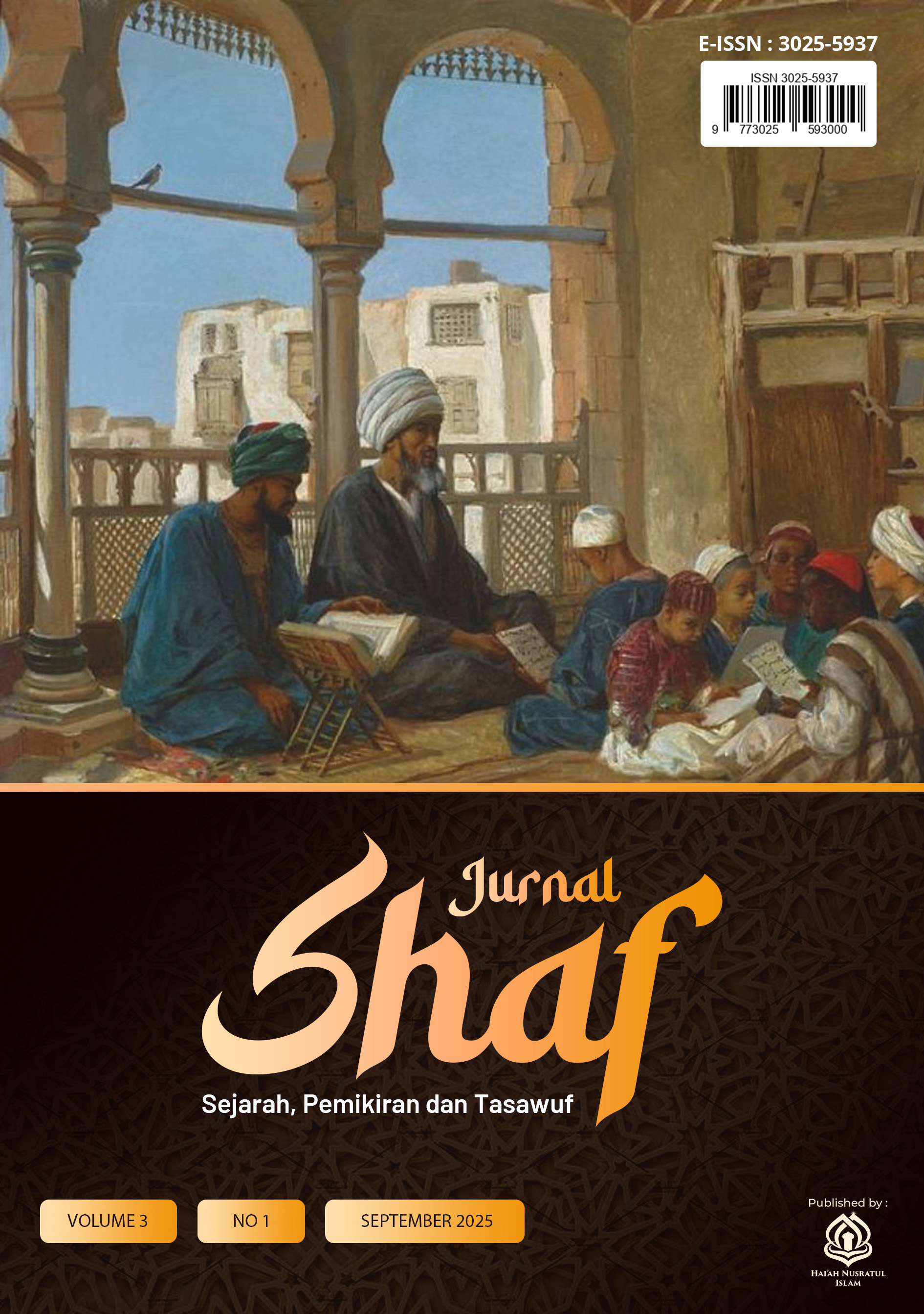TANDA ROFA’ WAWU DAN PENGARUHNYA TERHADAP AKHLAK SEORANG MUSLIM
DOI:
https://doi.org/10.59548/js.v3i1.427Keywords:
Wawu As Grammatical Sign, Character, Morality.Abstract
This study examines the use of the rofa’ marker wawu in Arabic from linguistic, philosophical, and moral perspectives that are relevant to the formation of a Muslim’s character. Using a qualitative approach through library research, the study analyzes both classical and contemporary literature on the use of wawu as a nominative marker in jama’ mudzakkar salim and asma’ul khamsah. The findings reveal that wawu as a grammatical indicator not only reflects structural syntax but also conveys symbolic values representing social order, semantic stability, and respect for noble social relationships. As a rofa’ marker, wawu functions as a symbol of honor within the linguistic and spiritual context of Islam. This research positions nahwu (Arabic grammar) not merely as a technical linguistic tool, but as a means of character education and spiritual development. Thus, Arabic grammar instruction can serve to instill moral values such as responsibility, discipline, and reverence for social roles. This interdisciplinary approach broadens the understanding of Arabic as an ethical medium that shapes a morally upright and spiritually aware Muslim identity.
References
Abid, M. N. (2016). Tanda-tanda I’rab Rafa’ Lengkap dengan Referensinya. Retrieved May 14, 2025, from https://dosenmuslim.com/bahasa-arab/tanda-tanda-irab-rafa/
Ahmad. (2019). Artikulasi Ilmu Nahwu Dalam Kehidupan (Studi Analisis Makna I’rob Kitab Al-Jurumiyah Menggunakan Semantika Dalalah Lafzhiyah dalam Ushul Fikih). Syaikhuna: Jurnal Pendidikan Dan Pranata Islam, 10(2), 193–210. https://doi.org/10.36835/syaikhuna.v10i2.3722
Annajah, A. (2022). I’rab Rofa: Definisi, Ciri, Jenis, dan Contohnya. Retrieved May 14, 2025, from https://annajah.co.id/irab-rofa/
Hidayah, N. (2016). Penjelasan Tanda I’rob Rafa’. Retrieved May 14, 2025, from https://nimahidayah.wordpress.com/category/doa/
Khasan, M. (2017). Perspektif Islam dan Psikologi Tentang Pemaafan. Jurnal At-Taqaddum, 9(1), 69–94. https://doi.org/10.21580/at.v9i1.1788
Natsir, M. (2020). Representasi Pola Perilaku Tasawuf Dalam Membangun Dinamisasi Masyarakat Global. Wahana Akademika: Jurnal Studi Islam Dan Sosial, 6(1), 41. https://doi.org/10.21580/wa.v6i1.3021
Suhaeni dan Ida Karneti. (2022). Nahwu Analysis: Use of Wawu in Surat Al-Kahfi. Jurnal International Seminar on Languages, Literature, Art and Education (ISLLAE), 4(1), 13–26.
Zafika, R. (2024). Al-Wawu dan Maknanya dalam Surah Ar-Rahman (Suatu Analisis Bahasa). Insitut Agama Islam Negeri Parepare.
Downloads
Published
How to Cite
Issue
Section
Categories
License
Copyright (c) 2025 Siti Rahimah Harahap, Ayu Sekarsari

This work is licensed under a Creative Commons Attribution 4.0 International License.
- Share — copy and redistribute the material in any medium or format for any purpose, even commercially.
- Adapt — remix, transform, and build upon the material for any purpose, even commercially.
- The licensor cannot revoke these freedoms as long as you follow the license terms.
Under the following terms:
- Attribution — You must give appropriate credit , provide a link to the license, and indicate if changes were made . You may do so in any reasonable manner, but not in any way that suggests the licensor endorses you or your use.
- No additional restrictions — You may not apply legal terms or technological measures that legally restrict others from doing anything the license permits.
Notices:
You do not have to comply with the license for elements of the material in the public domain or where your use is permitted by an applicable exception or limitation .
No warranties are given. The license may not give you all of the permissions necessary for your intended use. For example, other rights such as publicity, privacy, or moral rights may limit how you use the material.













